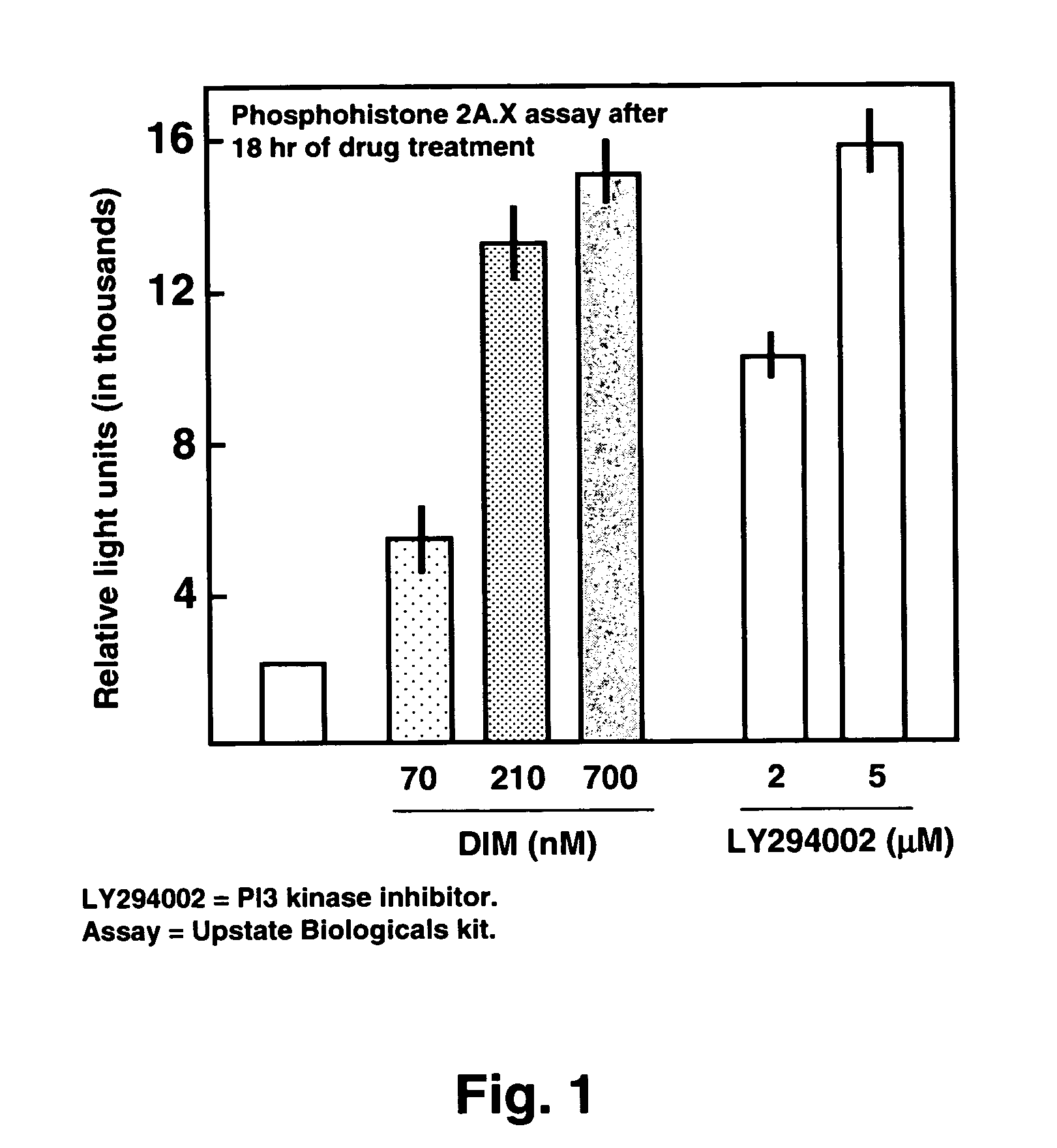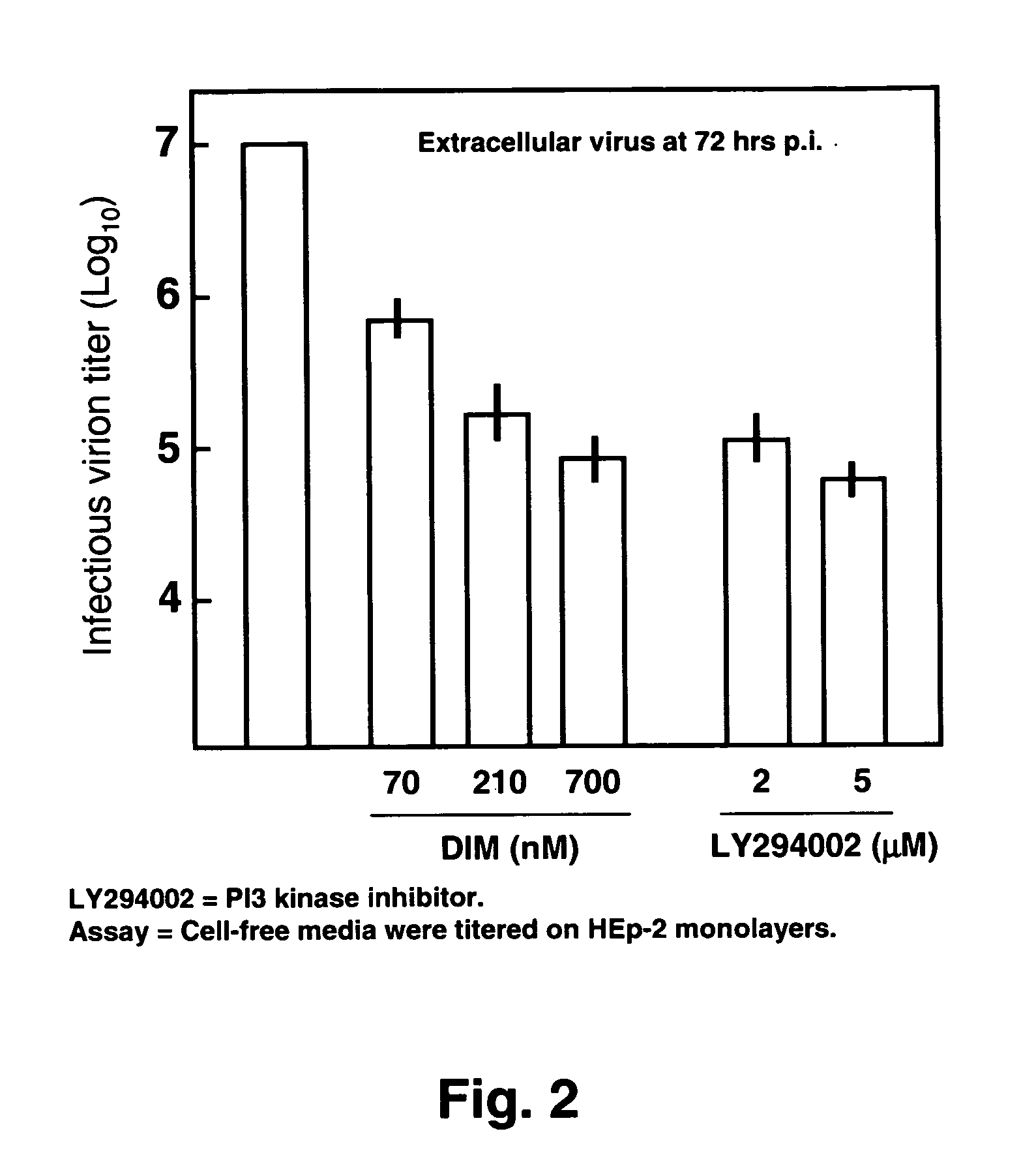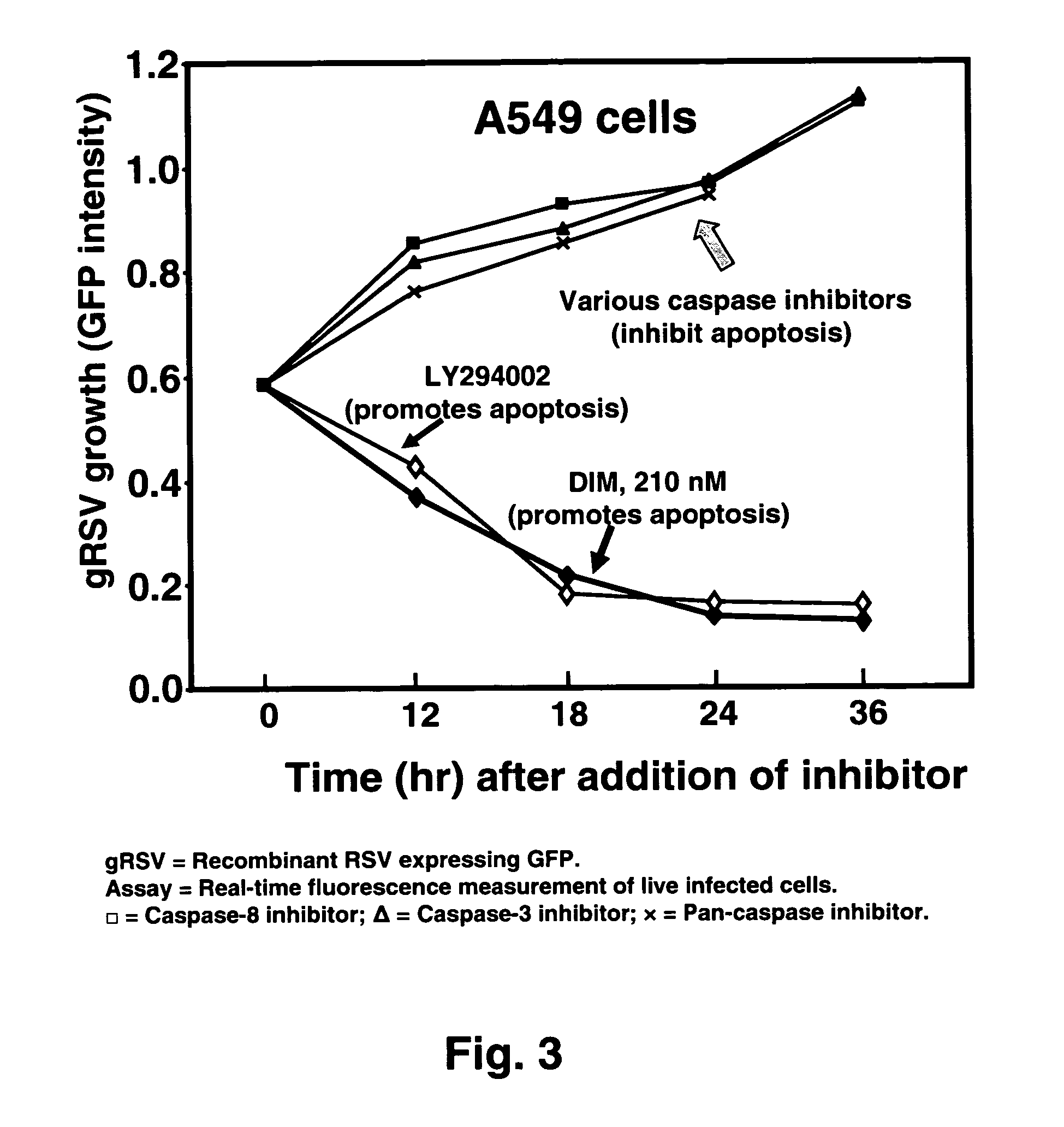Use of diindolylmethane-related indoles for the treatment and prevention of respiratory syncytial virus associated conditions
a technology of diindolylmethane and indole, which is applied in the direction of immunological disorders, drug compositions, peptide/protein ingredients, etc., can solve the problems of asthma symptoms, long-term morbidity and mortality, and increase the risk of recurrent wheezing
- Summary
- Abstract
- Description
- Claims
- Application Information
AI Technical Summary
Benefits of technology
Problems solved by technology
Method used
Image
Examples
Embodiment Construction
[0041]The invention concerns methods and compositions for preventing and treating Respiratory Syncytial Virus (RSV) infections utilizing DIM and DIM-related indoles. The invention further provides methods and compositions for treating RSV infections directed at promoting programmed cell death (apoptosis) of RSV infected cells. In a particular embodiment, combinations of DIM, or a DIM-related indole, and an EGFR inhibitor are provided. The methods and compositions provide improved treatment for RSV-associated infections. The methods and compositions of the invention are also applicable for the treatment and prevention of infections of other paramyxoviridae viruses, particularly in the pneumovirinae subfamily, more particularly in the genus Metapneumovirus, involved in diseases in humans and animals including, but not limited to, avian pneumovirus and human metapneumovirus. See Easton et al., 2004, Clinical Microbiology Rev. 17:390-412.
[0042]Without being bound by any theory, the meth...
PUM
| Property | Measurement | Unit |
|---|---|---|
| time | aaaaa | aaaaa |
| time | aaaaa | aaaaa |
| time | aaaaa | aaaaa |
Abstract
Description
Claims
Application Information
 Login to View More
Login to View More - R&D
- Intellectual Property
- Life Sciences
- Materials
- Tech Scout
- Unparalleled Data Quality
- Higher Quality Content
- 60% Fewer Hallucinations
Browse by: Latest US Patents, China's latest patents, Technical Efficacy Thesaurus, Application Domain, Technology Topic, Popular Technical Reports.
© 2025 PatSnap. All rights reserved.Legal|Privacy policy|Modern Slavery Act Transparency Statement|Sitemap|About US| Contact US: help@patsnap.com



